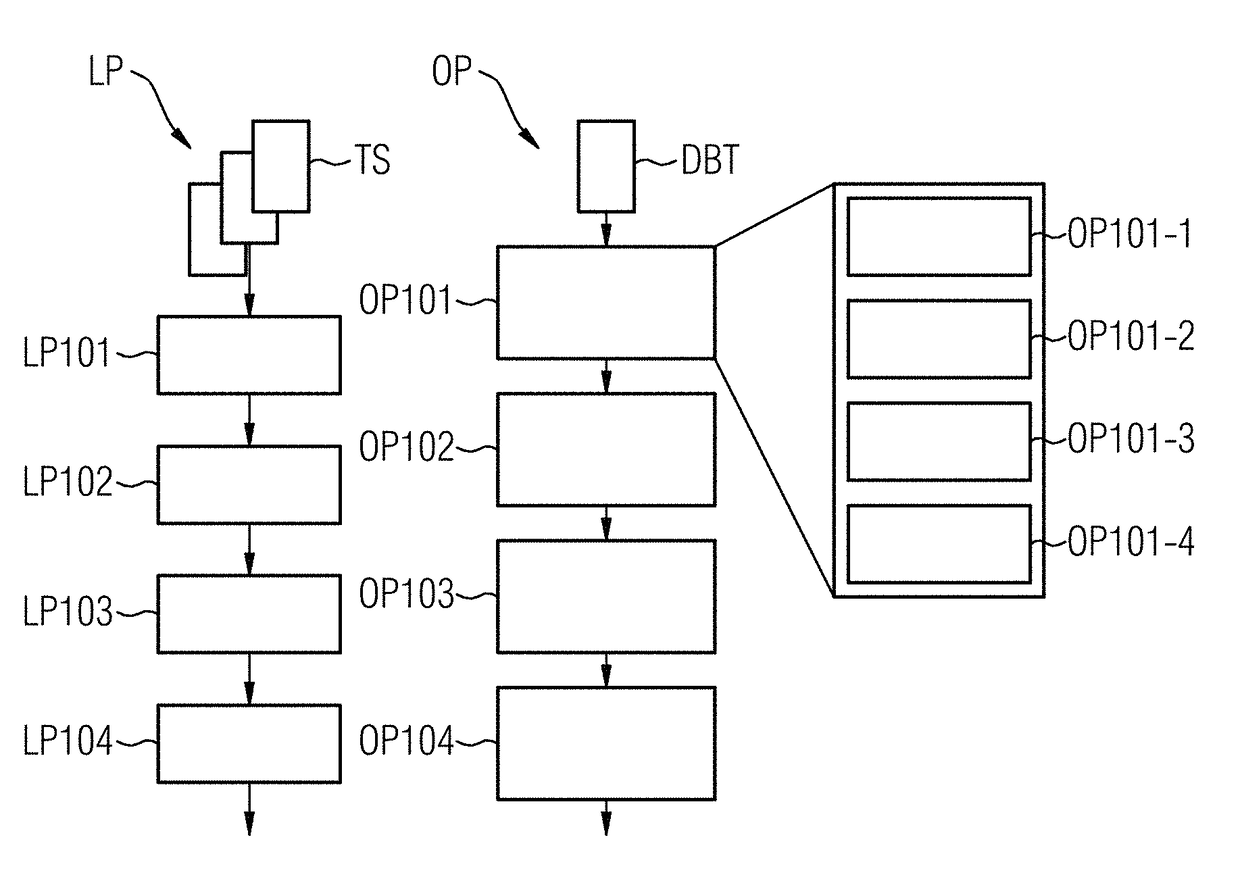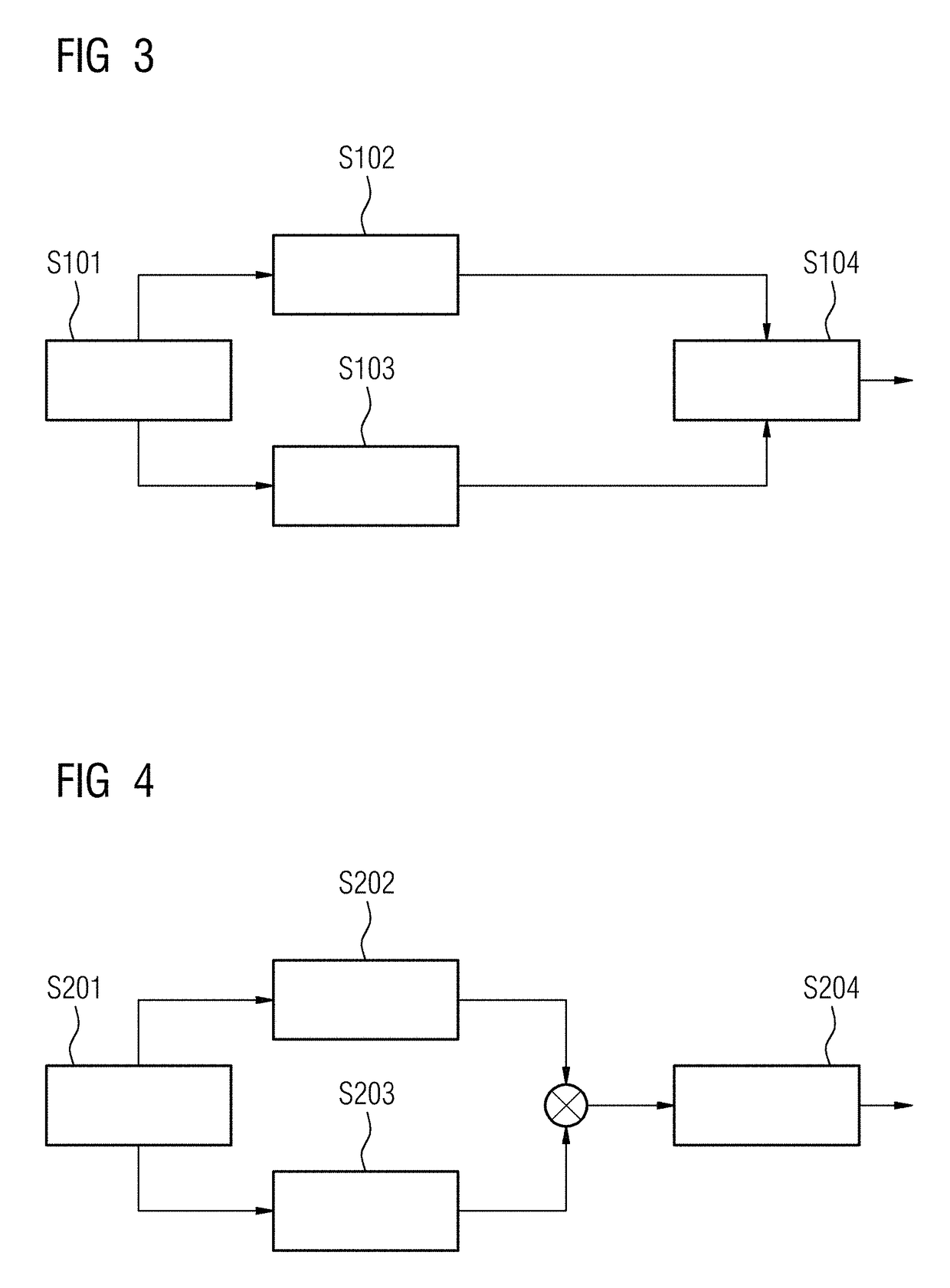Generating a synthetic two-dimensional mammogram
a two-dimensional mammogram and synthetic technology, applied in the field of synthetic two-dimensional mammograms, can solve the problems of increasing the workload of radiologists, dbt, etc., and achieve the effects of high efficiency, high quality of relevance maps, and highly realistic two-dimensional mammograms
- Summary
- Abstract
- Description
- Claims
- Application Information
AI Technical Summary
Benefits of technology
Problems solved by technology
Method used
Image
Examples
first embodiment
[0061]In a first embodiment, the training phase may be described as follows. The training set may include a set of DBT volumes with bounding boxes drawn by clinicians around the region of interest. A large set of 3D Haar-like features may be extracted at each voxel location indirectly from the raw DBT volume. Feature selection is performed using Pearson's coefficient to keep a reduced number of informative features. Afterwards, a random forest may be trained to infer the probability of being relevant for diagnosis. During the operating phase, the trained random forest may be used on a newly acquired DBT volume, where the relevance of each voxel location is inferred from the extracted local features. The resulting relevance map is then used simultaneously with the raw DBT intensity values to construct the 2D synthetic mammograms using the relevance-based averaging approach described previously.
second embodiment
[0062]In a second embodiment, channels such as gradient magnitudes, gradient orientations, Laplacian are computed from the raw DBT volumes. A large set of 3D visual context features may be extracted at each voxel location from all channels including the raw DBT channel. Such features are defined by the computation of the average intensity computed within sub-regions of any sizes at random offsets from the considered voxel location. Afterwards, feature selection may be applied using Pearson's coefficient, and a random forest classifier is trained. The trained model is then used to infer relevance and construct 2D mammogram as in the embodiment described previously.
third embodiment
[0063]In a third embodiment, voxel annotations provided by clinician are continuous values that encode the relevance of the underlying structures (e.g., how much a certain structure should be visible for providing reliable diagnosis). The learning problem is formulated as a regression task where for each voxel a visual context is associated to a continuous value. Regression forests are then used to model this relationship. Given a new unseen DBT volume, the trained model may be used to generate the relevance map and the resulting synthetic mammogram.
[0064]In a fourth embodiment, an online random forest trained as described previously may be further updated to take into account clinician feedback. The structure of the random forest is changed: according to the new incoming training set, in some cases, nodes may be further split, other features may be selected, or new trees may be added. The updated random forest may then be used to infer relevance and construct 2D mammogram as in the...
PUM
 Login to View More
Login to View More Abstract
Description
Claims
Application Information
 Login to View More
Login to View More - R&D
- Intellectual Property
- Life Sciences
- Materials
- Tech Scout
- Unparalleled Data Quality
- Higher Quality Content
- 60% Fewer Hallucinations
Browse by: Latest US Patents, China's latest patents, Technical Efficacy Thesaurus, Application Domain, Technology Topic, Popular Technical Reports.
© 2025 PatSnap. All rights reserved.Legal|Privacy policy|Modern Slavery Act Transparency Statement|Sitemap|About US| Contact US: help@patsnap.com



